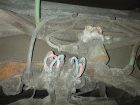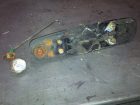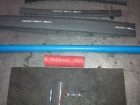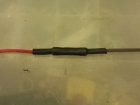
Equipment
Truck Tech: February 2015
Ice-melting products work well to keep roads safe during the winter, but, as fire-department repair mechanics will tell you, these products can wreak havoc in the truck bay.
February 4, 2015
By Chris Dennis
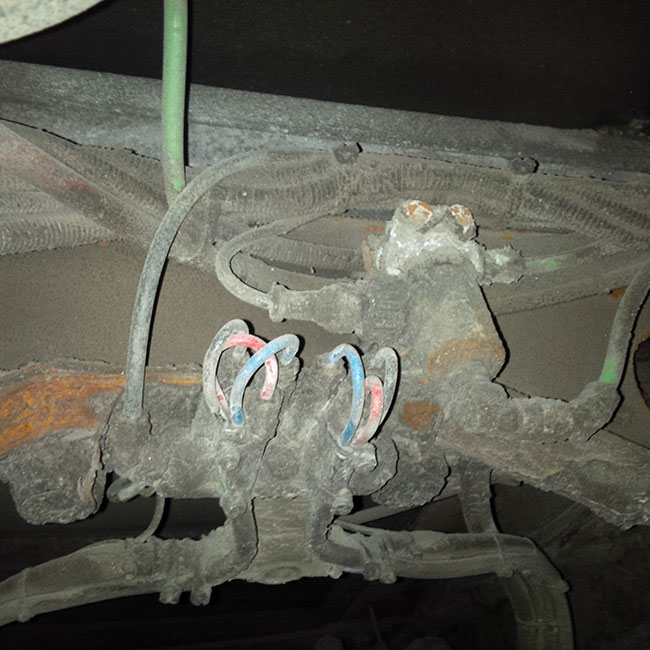 but
butOne of the most common ice-melting products is brine – a mixture of salt and water. Brine is used on many roadways across Canada because it lowers the freezing temperature of water. Hard salt does the same thing, only in a smaller area. Brine is used also because it creates fewer environmental issues than harder chemicals, and causes less damage to the roadways.
Besides brine (sodium chloride), there are a few products used on the roadways or around the municipal building yards in the winter. Here are some you may see:
- Sand
- Calcium chloride
- Magnesium chloride
- Potassium acetate
- Calcium magnesium acetate
- Beet juice
Three of these – sodium chloride, calcium chloride and magnesium chloride – are especially corrosive chemicals and can cause severe damage to fire trucks. These three chemicals are hygroscopic chlorides, which continue to eat away at trucks and equipment even when they are left to sit.
Wikipedia describes hygroscopic as “the ability of a substance to attract and hold water molecules from the surrounding environment.”
Because the chemical solutions are in liquid form, they can move into places on a truck body where regular soap and water cannot. Once the chemicals are in those spots, they continue to eat away at the metal and eventually dry up, only to be reactivated once they are exposed to water molecules again. Imagine the outside temperature is 20 C on a summer day in July and a sun shower breaks through the sky. A truck is making its way down the wet road to a call, the rain water sprays up and makes its way into the parts of the truck where the winter’s brine has dried into salt. The water marries with the dormant enemy and reignites it to start eating again.
Regular use of these chemicals on the roadways means the apparatus-maintenance cycle must increase, which means budgets will have to be adjusted for more preventative maintenance, plus the increased cost to repair the trucks when they break down due to excessive corrosion. The attack on apparatus metals will also extend the volume of repairs since paint, body, dissimilar metals and, worst of all, wiring, are all prey to this fire truck/emergency-service vehicle predator. The average cost to completely strip and paint a custom pumper fire truck correctly with full warranties today is between $15,000 and $20,000.
While fire-truck manufactures have had great success increasing the life spans of trucks, they have been set back by the new generation of salts and de-icing agents for roadways. These chemicals reduce the life cycle of a fire truck, which makes a fire chief’s visit to council even more challenging when the need to replace a piece of equipment long before its life cycle is over is announced, right before asking for more maintenance money.
Some of the chemicals used on the roads contain corrosion inhibitors, but they are salt- and metal-specific. There is no one inhibitor that prevents corrosion to each and every metal used in vehicles. As such, to date, there is no product that is completely non-corrosive.
In 2010, Vaughan Fire & Rescue Services took delivery of four brand-new, custom fire trucks – two quints and two pumps. Last winter, the trucks began to have weird electrical issues that I had not seen before in older equipment. A closer look at the trucks revealed all kinds of premature corrosion, specifically to the wiring harnesses and Deutsch connectors. The inspection also revealed badly corroded air-brake valves and mounts (see photos 1 and 2).
Vaughan Fire rust-protects its vehicles, on average, once a year or every other year (usually when the annual inspection is done). The rust-protection program worked for years on all our equipment up until a few years ago when we first started having issues with brake-pedal pivots, and with dissimilar metals seizing together. The 2002 units are already showing signs of corrosion, including wiring and hydraulic connection failures, and visible rusting on the brake valves, steel-ladder rungs, tip monitors and control boxes, aerial tip lighting, and both alternating- and direct-current electrics. The maintenance crew has to stay on top of these corrosion issues throughout the year to extend the life span of the trucks and equipment, and to keep repair costs down.
In general, pressure washing under equipment can be harmful, and should be avoided to protect areas into which water should not be forced. For some time now, original equipment manufacturers have condemned high-pressure or low-pressure washing on the underside of emergency vehicles, whether custom or commercial builds. The reasoning is that the electrical parts, once hit with direct high-pressure water, are more likely to suffer early connector failure. If there have been wiring repairs done with connectors, they too will be affected, especially if they are not soldered and heat-shrink wrapped when finished (see photos 3 and 4).
If you are ever probing wiring with a test light, be sure to seal the part of the wire you have pierced or the area will quickly become a spot for ice-melting chemicals to penetrate into the wire and cause future electrical issues.
It is unlikely that Joe’s Garage or the township or municipal-repair technician will be able to fix a dedicated fire-apparatus issue due to a brine attack. I mean no disrespect to my brother and sister mechanics, but the day of the untrained fire-department mechanic is slowly coming to an end and the time for trained fire-truck repair technicians or emergency vehicle technicians EVTs, is now.
There are a number of ways to help slow down the corrosion process. Repairs will still be necessary, but may not be required as often.
- Wash the outside body of the fire trucks with soap and water in the fire station regularly, especially in the winter. Use a soft brush and do not power wash in areas that cannot be easily dried out.
- Create an under-body wash system that can be used in the fire hall. For example, a short piece of 38-mm (1 1/2-inch) hose or booster line capped at one end, with holes punched in it like a sprinkler. Connect the piece of hose to a portable pump, the fire engine’s pump, a pressure washer, or even a fire-station connection if you have one as your water source. The idea is to stretch the hose under the truck from the driver’s to officer’s side. Starting at one end, drive the rig slowly over the charged line, washing the underside of the truck. You can create a soap injector at the feed-end of the hose to add soap to the water when it is turned on. Hard booster-line hose is best as it can be driven over. If your department does not have this kind of hose, then rig up some cribbing on either side of the hose so the trucks wheels roll over the cribbing not the hose, or shut off the line when the tires are close.
- Buy a regulated garden-hose applicator and a salt-neutralizing chemical. Vaughan Fire uses a product made by Krown Rust called MR35 Salt Eliminator in a bulk form (or available in spray cans). Use the correct water-to-product ratio, then spray on with garden-hose applicator. Let the truck sit or drive it slowly to let the product disperse, then rinse and dry. (See before and after pictures of a salt spreader vehicle in Ottawa that was treated with a salt-eliminator chemical: www.krown.com/industrial/mr-35-salt-eliminator-test.pdf)
- If you have a facility in which you can power wash your truck(s), I recommend consulting an expert who knows where high-pressure water can or cannot be used. Add a gentle soap stream to the mix, then rinse and blow dry if possible. Finish with a rust-protection product of some kind and cover everything – I mean everything. I recommend finding an environmentally friendly product as well.
- Use rust protection on your rigs at least once a year. If your province does annual inspections or six-month inspections, do it then so the rigs are out for less down time.
There are few forms of corrosion you will find on rigs:
Uniform corrosion spreads out at the same rate over a metal surface. This corrosion is damaging to fire trucks because it affects the underside of the vehicles, including electrical harnesses.
Poultice occurs when road salts and debris accumulate on vehicle ledges. The accumulated material is kept moist by the environment and washing the vehicles. Damage to vehicles occurs during the drying process.
Filiform corrosion occurs under the surface of an organic coating. This type of corrosion is seen on aluminum and magnesium alloy metals. It is caused by a void in the organic coating; for example, if an emergency light is installed once the truck has been painted, the installation creates a void between the paint and body where a hole is drilled.
Galvanic corrosion is an accelerated form of corrosion that occurs when two dissimilar metals come in contact with one another, such as aluminum and steel.
Frame rails and cross members are the most likely areas of a truck where corrosion will occur undetected for years, but there are other hot spots – steel wheels, aluminum wheels with steel inner dual wheels, air tanks, fuel tanks and mounting straps. When the wheels are removed for safety inspections or tire repairs and replacement, have a trained person carefully inspect the rims and the mounting areas of the truck, and report any defects at that time. Corrosive road salts will attack brake shoes, electrical systems, air-conditioning condensers, radiators, and metal coolant tubing.
All hard, visual inspections of cross members and tanks should be done by a trained person. For example, if your truck has double-frame rails, where would you think to look to see if the frame is being affected by rust? The frame channel is in the shape of the letter C, squared. Have a close look where the C channel starts and ends on the upper and lower part of the C. If there is a problem, the rust will have been building up between the two C channels and pushing them apart. Also look where there are unfilled drill holes. The rust build-up will bow the two C channels apart and through this hole you will be able to see the gap or excessive rust. Look at the outer frame rails where spring hangers are attached; the corrosion will start under the brackets and eat away at the metal, leaving deep voids and metal material missing. Be sure to repaint these areas if you can. Rust will also stretch bolts, especially huck fasteners (a form of frame bolt, like a rivet) and move and crack cross members.
In the fire service, undetected corrosion is the likely cause for trucks being out of service. Some early preventative care and protection will slow down the corrosion process, but will not stop it. Add rust prevention as part of your maintenance program in the fire hall and defeat the corrosion demon before it sets its nails in deep and does not let go. Remember, my friends, rubber side down.
Chris Dennis is the chief mechanical officer for Vaughan Fire & Rescue Service in Ontario. He can be reached at Chris.Dennis@vaughan.ca
Print this page
